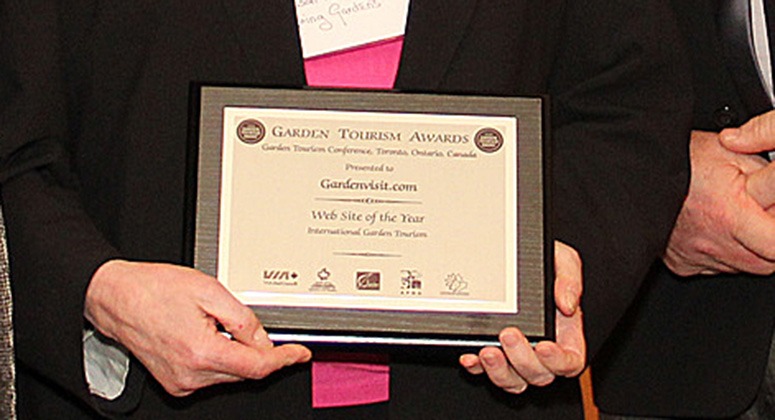Buddhist garden design in India, Sri Lanka and Nepal is the second of six videos on the relationship between Buddhism and the history of garden design.
Buddhism began in North India and, over the next 1500 years, almost died out in India. But it survived in Sri Lanka – which also has good examples of ancient Buddhist gardens used by monastic communities. See: Sigiriya, Polonnarauwa, Anuradhapura – Mahamegha Gardens (Mahamevuna Uyana),
The influence of Buddhism on garden design is explained in an eBook
Category Archives: Garden Design
The life of Siddhartha Gautama Buddha in Gardens
Buddhism is the world faith which has had most influence on gardens. This began in India and spread to China, Korea, Japan and other countries in South and East Asia. I have sketched these developments in an eBook and six videos, of which this is the first.
The Shock of the New – Freeway
The freeway for the electric and hybrid car need not be the highway we are used to.There is no reason why it might not be encased in landscape when the view out is less than appealing: concrete noise barriers or the back of suburban areas or some of the more hostile industrial areas of our large cities.There is no reason why the drive to work need be monotonous…and why the landscape views might not be considered in the same way as a promenade through a garden. We should take advantage of what nature provides and the cultural landscapes we have created.
'Form is emptiness' – in Buddhism, garden design and landscape architecture
 The enclosure on Vulture Peak Rajgir, India is believed to the be the place where the Buddha delivered the teaching recorded in the Heart Sutra. It contains the famous lines:
The enclosure on Vulture Peak Rajgir, India is believed to the be the place where the Buddha delivered the teaching recorded in the Heart Sutra. It contains the famous lines:
Form is emptiness, emptiness is form
Emptiness is not separate from form, form is not separate from emptiness
Whatever is form is emptiness, whatever is emptiness is form
The phrasaeology is meant to induce meditation. ‘Emptiness’ (Śūnyatā) may be interpreted in relation to the Buddhist concept of non-self (Anatta). Nothing we see has a separate ‘self’. Everything is inter-connected. The lines embody a paradox and this may be deliberate – because there is so much about the nature of the universe which cannot be understood. My own understanding of the lines is as follows:
– objects appear to have form but, because they are connected to everything else, this is an illusion
– the ‘everything else’ to which objects are connected can only be perceived through forms
This gives the lines from the Heart Sutra a relationship with Plato’s Theory of Forms and with the modern distinction between particulars and universals. We might say that universials are known only from particulars and that particulars are understood only when they can belong to universal categories. The favourte example is cats (see Fig 1). We only know the universal ‘cattiness’ through particular examples and we only know that particular cats ARE cats because of our acquiaintance with the universal form of cats.
Assuming I have interpreted the Buddha and Plato correctly, I am more attracted to the Buddhist version. Plato conceived the forms as eternal and unchanging. For a landscape architect or garden designer this is unappealing. It implies that all possible forms and designs already exist. The Buddhist version gives important positions both to the form which a designer ‘assembles’ and to the inter-connected cosmos (I almost wrote ‘compost’) from which the elements are drawn – and to which they will return. Forms have no ‘self’; they change every instant; they are impermanent (annica). Modern science confirms that everything is in flux. We notice it more in outdoor than indoor environments. With time the fourth dimension, landscape design appears to be a four-dimensional art.
The photo is from Wikipedia, with thanks. The design uses one of the primary Platonic forms: the square. Compare it with the photo of St Francis, below. Monasticism was a Buddhist idea and the monks seem to belong to the Axial Age, of the Buddha, Plato, Confucius and the author(s) of the Old Testament. Or do they belong to an even earlier age when India rishis meditated in forests, caves and mountain retreats? And why was it such a great period in the history of philosophy and religion? Should philosophers and religious leaders – and landscape designers – work in the great outdoors, instead of in fusty musty offices? Yes. Form is emptiness and emptiness is form.
Gardenvisit.com wins 2013 Award for Best Garden Tourism Website
 We were delighted to receive the 2013 Website of the Year Award. It was one of the Canadian and International Awards handed out during the Garden Tourism Conference in Toronto, Canada. The Garden Tourism Awards are presented to organizations and individuals who have “distinguished themselves in the development and promotion of the garden experience as a tourism attraction. Recipients travelled from across North America and as far away as Japan, France, Portugal, Italy, and Australia”.
We were delighted to receive the 2013 Website of the Year Award. It was one of the Canadian and International Awards handed out during the Garden Tourism Conference in Toronto, Canada. The Garden Tourism Awards are presented to organizations and individuals who have “distinguished themselves in the development and promotion of the garden experience as a tourism attraction. Recipients travelled from across North America and as far away as Japan, France, Portugal, Italy, and Australia”.
“It is an honor to be part of the international community that has established an awards program to recognize the invaluable contribution the world’s outstanding garden experiences make, not only in terms of environmentally friendly and sustainable tourism, but also in terms of the equally important intangible benefits that nature brings to the soul,” said Alexander Reford, Chair of the Canadian Garden Tourism Council as he handed out the Awards. Michel Gauthier, Conference Chair, closed the event by saying, “According to Richard Benfield, authorof ‘Garden Tourism’, more people visit gardens annually in the US than visit Disneyland and Disneyworld combined, and more than visit Las Vegas in any given year. Given those impressive statistics, we’re certainly on the right track as we recognize the country and the world’s finest garden experiences in this vibrant, thriving and rapidly growing segment of the international tourism market.” The inaugural Garden Tourism Awards were presented at the 2011 Garden Tourism Conference held in Toronto. To view past winners, visit: www.gardentourismconference.com and click on the ‘media’ tab. In the spirit of highlighting Canada and the world’s most dynamic garden experiences and GardenTourism’s limitless potential, the Canadian Garden Tourism Council, in consultation with a Canadian and international jury network, proudly announce the 2013 recipients of the Garden Tourism Awards.


Garden tourism: ‘Is London the World’s Gardening Capital?’
I am a Londoner – and, with understandable bias, regard London as the capital city of:
- world gardens,
- garden design
- gardening
As argued in the above video, the reasons for this are both geographical and historical. Britain was emerging from the Pleistocene when horticultural techniques were devised (about 12,000 years ago) and they did not reach Britain until c3,800 BC. The art of making pleasure gardens came to London with the Romans, ended when they left and resumed when the Normans invaded England in 1066. Since then, there has been a steady advance in the popularity of gardening. Long may it continue! Britain is always likely to have a hard time competing with the Mediterranean countries for beach holidays – but it has very considerable opportunities for developing garden tourism. We were delighted to hear of the 2013 Garden Tourism Conference to be held in Toronto, Canada, in March – and have entered the Gardenvisit.com Website in hopes of receiving an award in the Garden Tourism Website category. Further information on the London Gardens Walk – and free routemaps.

